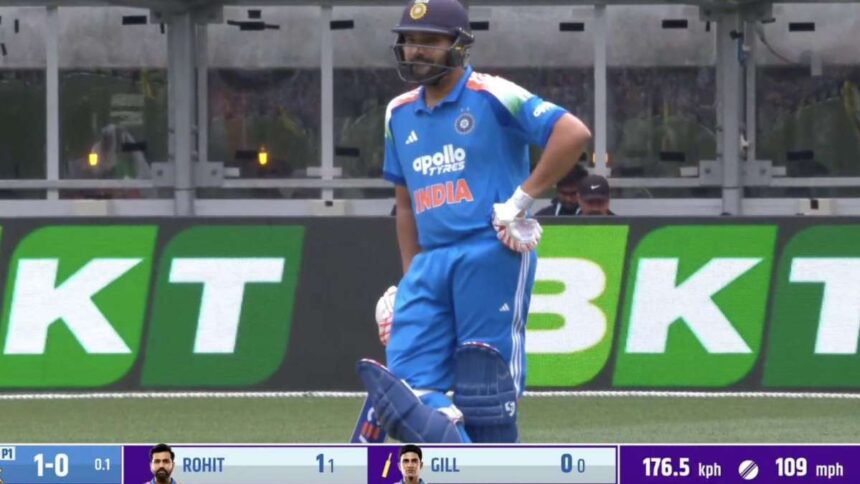India take on Australia in the first ODI of the ongoing series. The two sides lock horns at the Optus Stadium in Perth on October 19, and the game began with Australia winning the toss and opting to bowl first in the game. However, one of the biggest moments from the game came in the early stages of the clash.
It is worth noting that Mitchell Starc came out to bowl the first over of the game, and he managed to capture the headlines with his first delivery. Taking on Rohit Sharma, Starc seemed to bowl a delivery with a speed of 176.5 kph. With the fans left stunned, the moment was most likely a technical glitch.
The fastest ball ever bowled in cricket history has been recorded at 161.3 kph, which was bowled by former Pakistan cricketer Shoaib Akhtar, who bowled the delivery to England’s Nick Knight at the 2003 World Cup.
Rain stops play in Perth
Speaking of the game between Australia and India, the Men in Blue got off to a horrid start to the game. Opener Rohit Sharma departed on a score of eight runs. Furthermore, Virat Kohli went packing to the pavilion for a duck as well. To add insult to injury, the newly appointed skipper, Shubman Gill, only scored 10 runs before he was dismissed as well.
India hoped to build a solid partnership with Shreyas Iyer and Axar Patel before rain came pouring down and stopped play. The game was already shortened by an over, and the second spell of rain would see the match shortened even further. As play resumes, both Iyer and Axar will hope to put in a resilient performance, aiming to steady the ship for the Indian team.
Also Read:
</div>









